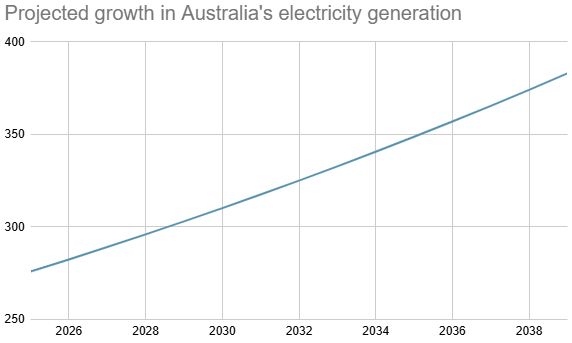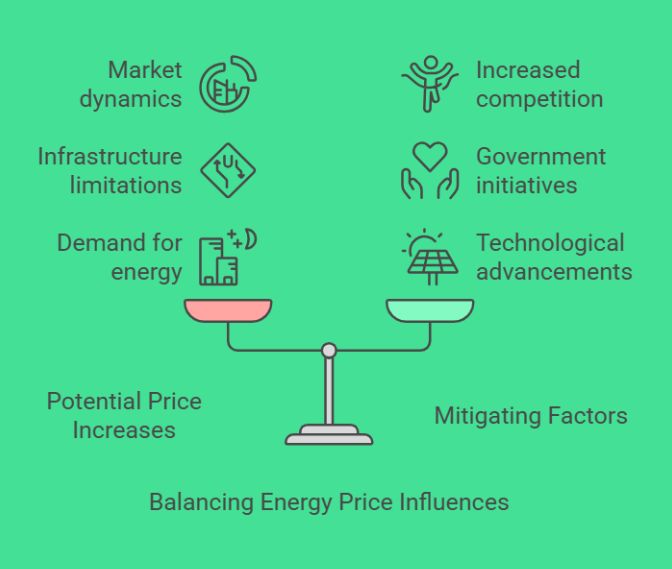As we move through 2025 and beyond, Australia’s energy sector is undergoing a significant transformation. Recent data and expert analyses paint a picture of increasing energy demand coupled with a rapid transition towards renewable sources. This shift is likely to have profound implications for retail electricity prices in the coming decade. Sodium-ion batteries will be key to managing part of this.
Rising Energy Demand
According to the latest projections, Australia’s electricity generation is expected to reach 275.90 billion kWh in 2025, with an annual growth rate of 2.37%. This increase is driven by several factors:
- Population growth and urbanisation
- Accelerating adoption of electric vehicles
- Expanding use of AI technologies and data centers
- Ongoing development of renewable energy infrastructure

The Renewable Energy Boom
The Clean Energy Australia Report 2024 highlights the remarkable progress in renewable energy adoption:
- Renewables accounted for 39.4% of Australia’s total electricity supply in 2023
- 5.9 GW of new renewable generation capacity was added in 2023
- 3.1 GW of new rooftop solar capacity was installed by 337,498 households and small businesses
This rapid growth in renewables is reshaping the energy market, with significant implications for future electricity prices.
Factors Influencing Future Electricity Price Increases
Several trends suggest that retail electricity prices could rise in the next 10-15 years:
- Renewable Energy Transition: The shift to renewables requires substantial infrastructure investments, which may be reflected in consumer prices.
- Energy Storage Investments: Large-scale storage investments increased from $1.9 billion in 2022 to $4.9 billion in 20235, potentially impacting electricity costs.
- Grid Modernization: Integrating distributed energy resources and creating a more flexible grid will necessitate significant infrastructure upgrades.
- Electric Vehicle Adoption: The growing popularity of EVs will increase electricity demand, potentially straining the grid during peak charging times.
- AI and Data Center Energy Consumption: The expansion of these technologies will significantly increase energy demand.
Mitigating Factors
- Technological advancements in renewable energy and storage may reduce costs over time.
- Government initiatives, such as the Snowy2 Project, could help offset some costs (note – delays and cost overruns in these initiatives will have a negative impact).
- Increased market competition may help keep prices in check.

The Path Forward and Sodium-ion Batteries
As Australia moves towards its emissions reduction targets, the energy sector will continue to evolve. The Clean Energy Council reports that 27 utility-scale batteries were under construction at the end of 2023, accounting for a total of 5 GW / 11 GWh combined capacity. This expansion in storage capacity will be crucial for managing the intermittency of renewable sources. One key way to manage retail electricity will be sodium-ion batteries
However, challenges remain. The Clean Energy Council noted no new financial commitments to utility-scale wind projects in 2023, compared to six in 2022. This highlights the need for continued investment and policy support to maintain the momentum of the renewable energy transition.
In conclusion, while the exact trajectory of retail electricity prices is difficult to predict, the combination of increasing demand, necessary infrastructure investments and the transition to renewable energy sources suggests that prices could rise in the next 10-15 years. However, this trend could be moderated by technological advancements and policy interventions. As we move forward, balancing affordability, reliability and sustainability will be key to shaping Australia’s energy future. The future improves with sodium-ion batteries

Resources
1. Clean Energy Council • Clean Energy Australia Report 2024 – This report provides the latest statistics on renewable energy generation, capacity additions, and investments in Australia.
2. Australian Renewable Energy Agency (ARENA) • Australian electricity market analysis report to 2020 and 2030 – This report offers projections for future electricity demand and wholesale electricity prices in Australia’s major electricity markets.
3. Australian Bureau of Statistics (ABS) Energy Account, Australia, 2022-23 financial year.
4. Australian Energy Market Operator (AEMO) NEM electricity demand forecasts
5. Department of Industry, Science and Resources Gas supply and demand outlook for 2025
6. Australian Energy Regulator (AER) Electricity Demand Forecasting Methodology
